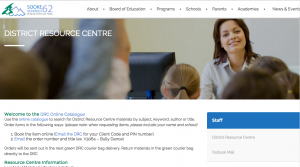 What is a Learning Commons?
What is a Learning Commons?
Imagine a school where there is a physical and virtual space for collaboration among students, faculty and administration. This space is “the hub of the school, where exemplary learning and teaching are showcased, where professional development, teaching and learning experimentation and action research happen” (Loertscher, Koechlin & Zwaan, 2008 as cited in Hayes, 2015). The faculty and administration identify that students learn in unique ways and the concept of a learner centered environment is a part of the school’s culture. Administration and faculty collaborate to “…build the capacity of learners to make sense of the world around them, to graduate good citizens in a democratic society, and to prepare our youth for successful careers and healthy, satisfying personal lives” (Canadian Library Association, 2014). The British Columbia’s Teacher Librarian Association (BCTLA) has identified the need for the scenario described and are working to transform the library into a Learning Commons in schools across BC, among these – schools in the Sooke School District.
“A Learning Commons is a common, or shared, learning ‘space’ that is both physical and virtual. It is designed to move students beyond mere research, practice, and group work to a greater level of engagement through exploration, experimentation, and collaboration. A Learning Commons is more than a room or a website. A Learning Commons allows users to create their own environments to improve learning. A Learning Commons is about changing school culture, and about transforming the way learning and teaching occur” (Loertscher, Koechlin & Rosenfeld, 2012).
References:
Canadian Library Association (2014).Leading Learning: Standards of Practice for School Library Learning Commons in Canada. Retrieved from clatoolbox.ca/casl/slic/llsop.pdf
Hayes. T (2014, Jan) Library to Learning Commons. A Recipe for Success. Education Canada Magazine. Retrieved from www.cea-ace.ca/education-canada/article/library-learning-common
Loertscher, D.V., Koechlin, C. & Rosenfeld, E. (2012). The virtual learning commons: Building a participatory school learning community. Salt Lake City, UT: Learning Commons Press.

 enables the sharing of knowledge and creativity throughout the world. The organization produces and maintains a free suite of licensing tools to allow anyone to easily share, reuse, and remix materials with a fair “some rights reserved” approach to copyright.
enables the sharing of knowledge and creativity throughout the world. The organization produces and maintains a free suite of licensing tools to allow anyone to easily share, reuse, and remix materials with a fair “some rights reserved” approach to copyright.





















